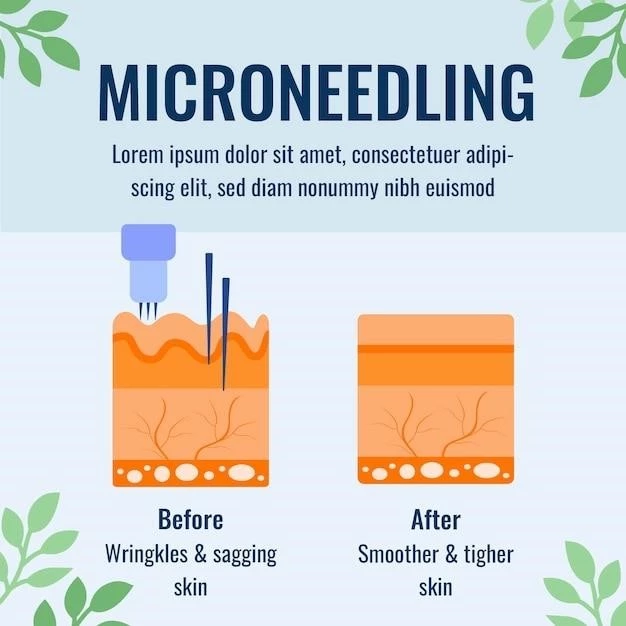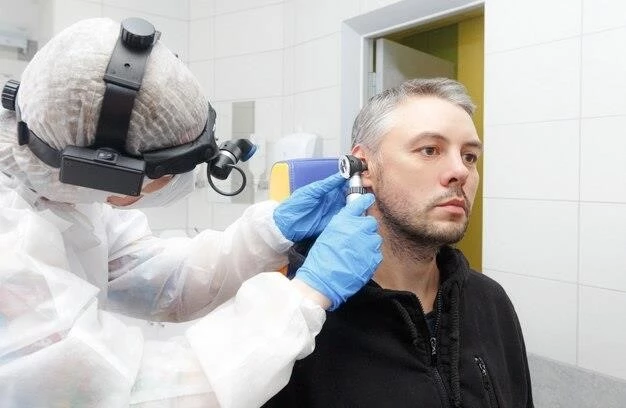Understanding Epidermolysis Bullosa Dystrophica‚ Bart Type
Epidermolysis Bullosa Dystrophica (EBD) is a genetic condition affecting the connective tissue of the skin․ It leads to skin detachment‚ blistering‚ scarring‚ and painful sores․ The weakened skin in EBD is due to a malfunction in collagen fibers and keratinocytes‚ causing Bart syndrome‚ an inherited disease․ Understanding the inflammatory response is crucial in managing EBD․
Overview of Epidermolysis Bullosa Dystrophica (EBD)
Epidermolysis Bullosa Dystrophica (EBD) is a severe skin disorder characterized by the formation of blisters and lesions in response to minor friction or trauma․ This genetic condition affects the integrity of the skin’s connective tissue‚ leading to fragile and weakened skin․
Individuals with EBD experience recurrent blistering that can result in painful sores and open wounds․ The blisters can occur anywhere on the body‚ including the mucous membranes․ The constant blistering and skin fragility in EBD make everyday activities challenging and painful for those affected․
EBD is caused by mutations in genes responsible for producing proteins essential for maintaining the structure of the skin․ These mutations disrupt the normal functions of epidermal cells‚ specifically keratinocytes‚ which are crucial for skin integrity․ As a result‚ the skin in individuals with EBD lacks the necessary strength to withstand friction or pressure‚ leading to blister formation․
Aside from the physical symptoms‚ EBD can also have a significant psychological impact on individuals and their families․ The chronic nature of the condition‚ along with the potential for scarring and disfigurement‚ can affect quality of life and mental well-being․
Management of EBD involves a multidisciplinary approach that focuses on preventing blisters‚ managing pain‚ and promoting wound healing․ Advanced wound care techniques‚ protective bandaging‚ and gentle handling of the skin are essential components of treatment for individuals with EBD․
Given the challenges posed by EBD‚ ongoing research is dedicated to finding new therapeutic strategies to improve the quality of life for those affected by this debilitating skin disorder․
Understanding Skin Disorders in EBD
Epidermolysis Bullosa Dystrophica (EBD) manifests as a group of inherited skin disorders characterized by extreme fragility of the skin․ The primary feature of EBD is the formation of blisters and erosions in response to minor trauma or friction․ These skin disorders affect individuals at the molecular level‚ leading to significant challenges in skin integrity․
EBD is associated with mutations in genes that encode critical structural proteins in the skin‚ such as collagen and keratin․ Collagen fibers play a vital role in the skin’s ability to resist shearing forces‚ and mutations affecting collagen production can weaken the skin significantly․
Individuals with EBD often exhibit skin that is prone to tearing‚ blistering‚ and scarring․ The fragile nature of the skin makes it susceptible to damage from even routine activities like dressing‚ bathing‚ or rubbing against surfaces․ As a result‚ individuals with EBD require specialized care to prevent skin breakdown and promote healing․
There are different subtypes of EBD‚ each with its own distinctive characteristics and severity․ Common symptoms across EBD subtypes include chronic skin blistering‚ thickening of the skin over time (hyperkeratosis)‚ and the development of painful sores and erosions․
Living with a skin disorder in EBD can be physically and emotionally challenging․ The recurrent blisters and wounds not only cause physical discomfort but also impact self-esteem and social interactions․ Effective management of skin disorders in EBD involves a comprehensive approach that addresses both the physical and emotional aspects of the condition․
Research into novel treatments for EBD skin disorders is ongoing‚ with a focus on developing therapies that target the underlying genetic defects․ Additionally‚ advancements in wound care techniques and skin protection strategies continue to improve the quality of life for individuals affected by EBD․
Mechanism of Blister Formation in EBD
The mechanism of blister formation in Epidermolysis Bullosa Dystrophica (EBD) is rooted in the compromised integrity of the skin’s structure at a molecular level․ This genetic condition disrupts the normal functioning of essential proteins that maintain the cohesion between layers of the skin‚ leading to blistering upon minimal trauma․
In EBD‚ mutations in genes encoding proteins like collagen and keratin weaken the connections between the layers of the skin․ Collagen fibers‚ which provide strength and structure to the skin‚ are particularly affected by these mutations․ This weakening of collagen fibers results in a lack of support for the epidermal-dermal junction‚ making the skin more susceptible to separation․
When individuals with EBD experience friction or pressure on their skin‚ the weakened attachment points between the layers fail to hold‚ leading to the formation of blisters․ These blisters can vary in size and intensity‚ from small fluid-filled sacs to larger‚ more severe blisters that cover extensive areas of the body․
The process of blister formation in EBD involves a cascade of events that begin with mechanical trauma to the skin․ The skin’s inability to withstand this trauma due to genetic mutations results in the separation of layers‚ creating a space that fills with fluid‚ forming a blister․
Furthermore‚ the repeated blistering and healing cycles in EBD can contribute to scarring and skin damage over time․ Scars may form as a result of the body’s attempts to repair the skin following blister formation‚ leading to skin thickening and texture changes․
Understanding the mechanism of blister formation in EBD is crucial for developing targeted therapeutic interventions aimed at strengthening the skin’s structure and preventing blister formation․ By addressing the root cause of skin fragility in EBD‚ researchers aim to improve the quality of life for individuals affected by this challenging condition․
The Role of Collagen Fibers in EBD
Collagen fibers play a crucial role in the pathogenesis of Epidermolysis Bullosa Dystrophica (EBD)‚ particularly in the development of skin fragility and blistering in individuals with this genetic condition․ Collagen is a key structural protein found in the skin’s extracellular matrix‚ providing strength‚ support‚ and elasticity․
In EBD‚ mutations in genes responsible for collagen production result in the aberrant formation or reduced amounts of collagen fibers․ These abnormal collagen fibers lead to structural weaknesses in the skin‚ making it more prone to separation and blister formation in response to mechanical stress․
The lack of functional collagen fibers compromises the integrity of the skin’s dermal-epidermal junction‚ the area where the outermost layer of skin (epidermis) attaches to the inner layer (dermis)․ This weak junction in individuals with EBD contributes to the formation of blisters and erosions upon minor trauma․
Moreover‚ collagen fibers are essential for providing tensile strength to the skin‚ allowing it to withstand stretching and mechanical forces․ In the absence of properly formed collagen fibers‚ the skin in individuals with EBD lacks the necessary resilience to maintain its structure under tension‚ leading to skin fragility and blistering․
The role of collagen fibers extends beyond structural support‚ as collagen also contributes to the skin’s healing processes․ Proper collagen formation is essential for wound repair and scar formation․ In EBD‚ disruptions in collagen production can impair the skin’s ability to heal effectively‚ resulting in delayed wound healing and increased scarring․
Understanding the critical role of collagen fibers in EBD is essential for developing targeted therapies that aim to restore collagen production‚ strengthen the skin’s structure‚ and minimize the risk of blister formation․ By addressing collagen abnormalities‚ researchers strive to improve outcomes and quality of life for individuals living with EBD․
Inflammatory Response in EBD
The inflammatory response plays a significant role in the pathogenesis of Epidermolysis Bullosa Dystrophica (EBD)‚ particularly in the development and progression of skin lesions and blisters in affected individuals․ In EBD‚ the inflammatory response is triggered by the continuous trauma and friction that the fragile skin experiences․
When the epidermal-dermal junction is compromised due to genetic mutations affecting proteins like collagen and keratin‚ the skin’s barrier function is compromised‚ allowing external elements to penetrate and trigger an inflammatory reaction․ This inflammatory response leads to redness‚ swelling‚ and pain around the affected areas․
As blisters form in response to friction or pressure‚ the body’s immune cells‚ such as neutrophils and macrophages‚ are recruited to the site of injury to initiate the inflammatory response․ These immune cells release pro-inflammatory cytokines and other mediators that promote vasodilation and increased vascular permeability‚ contributing to the characteristic redness and swelling seen in EBD lesions․
The inflammatory response in EBD is both a protective mechanism and a contributor to tissue damage․ While the immune cells work to clear debris and pathogens from the injured site‚ the release of pro-inflammatory factors can also exacerbate tissue damage‚ prolong inflammation‚ and impair the skin’s ability to heal․
Chronic inflammation in EBD can lead to further skin breakdown‚ delayed wound healing‚ and increased scarring․ The prolonged activation of inflammatory pathways can disrupt the delicate balance between tissue repair and inflammation‚ perpetuating a cycle of skin damage and impaired healing․
Understanding the inflammatory response in EBD is essential for developing therapeutic strategies that aim to modulate the immune response‚ reduce inflammation‚ and promote tissue repair․ By targeting key inflammatory pathways‚ researchers seek to alleviate symptoms‚ prevent complications‚ and improve the overall management of EBD in affected individuals;
Understanding Bart Syndrome as an Inherited Disease
Bart Syndrome‚ a subtype of Epidermolysis Bullosa Dystrophica (EBD)‚ is an inherited disease characterized by severe skin fragility‚ blistering‚ and scarring․ This genetic condition is caused by mutations in specific genes that encode proteins crucial for maintaining skin integrity․
Individuals with Bart Syndrome inherit these genetic mutations from their parents‚ leading to the development of symptoms associated with EBD early in life․ The severity of Bart Syndrome can vary among individuals‚ with some experiencing milder forms of the condition‚ while others may have more debilitating symptoms․
The genetic mutations associated with Bart Syndrome typically affect genes responsible for producing collagen‚ keratin‚ or other structural proteins in the skin․ These mutations disrupt the normal structure and function of the skin‚ resulting in skin fragility and blistering in response to minor trauma or friction․
Bart Syndrome poses significant challenges for affected individuals and their families‚ as the chronic nature of the condition requires ongoing medical care‚ wound management‚ and supportive therapies․ The skin fragility and blistering in Bart Syndrome can impact daily activities‚ mobility‚ and quality of life․
Early diagnosis and proper management of Bart Syndrome are essential for minimizing complications and improving outcomes for individuals living with this inherited disease․ Multidisciplinary care teams including dermatologists‚ genetic counselors‚ and wound care specialists play a crucial role in providing comprehensive support for individuals with Bart Syndrome․

Research into Bart Syndrome and other subtypes of EBD is focused on understanding the underlying genetic mechanisms‚ developing targeted therapies to address specific gene mutations‚ and improving the overall quality of life for individuals affected by these challenging skin disorders․
